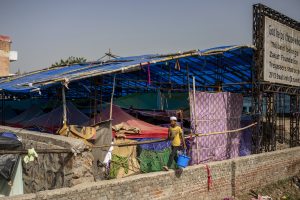As the Indian government celebrated “Azadi Ka Amrit Mahotsav” to signify 75 years of Indian independence, the government portrayed the work it had done across sectors and industries under the leadership of Prime Minister Narendra Modi over the past eight years.
One such aspect highlighted by the government was refugee rehabilitation and integration into India. This was portrayed through a video produced by the government of India, in collaboration with the United Nations. In the video, a small group of refugees, most from Myanmar, are singing the Indian national anthem, showcasing their love for a country that has supported them. But the video begs a question that cannot be ignored: What about the thousands of Rohingya refugees that continue to flee or be deported from India, due to the lack of support from the Indian government?
In 2021 and 2022 alone, thousands of Rohingya refugees were either jailed and deported by Indian authorities, had to flee the country, or had to go underground so as to remain untraceable within India. Personal accounts of refugees reveal that people with U.N.-issued cards are not spared by the authorities either. This is a major issue that clearly highlights the Indian government’s intolerant behavior toward the refugee population residing in India.
Additionally, on August 16, when Union Minister for Housing and Urban Affairs Hardeep Singh Puri tweeted that the Muslim Rohingya population living in New Delhi will be provided accommodation and police protection at the EWS flats in the Bakkarwala area of Delhi, the Ministry of Home Affairs responded that the Rohingya refugees won’t be given any such housing and will be kept in detention centers, until they are deported.
Such instances showcase that India’s stance on refugee matters continues to remain blurred. On the one hand, Indian ministers emphasize India’s policy to provide refuge to all, irrespective of race, religion, or creed, but at the same time, the Indian government continues to detain and deport refugees by terming them “illegal foreigners.”
Another factor that needs to be noted in regard to this matter is the tussle between India and Bangladesh over hosting refugees. Given the volumes of refugees Bangladesh already shelters, back in 2019 the home minister of Bangladesh said, “We are already taking care of nearly 11 lakhs [1.1 million] Rohingya Muslims and they are living in restricted areas. It’s a huge financial burden on us. We will not allow them to enter our territory from Indian side.” So, the question in this regard remains, who is right? Is Bangladesh wrong to deny more refugees as it already bears a large burden? Is India wrong in not hosting these refugees when it has the capacity to, instead of pushing them across to Bangladesh?
Arguments over Rohingya refugees between the two countries have taken place in the past. In both 2021 and 2011, when Rohingya reached Indian shores, instead of taking them in, Indian authorities sent them to Bangladesh. Both countries did not want to accept these Rohingya into their territories and to date the fate of 172 Rohingya refugees remain unknown and untraceable.
As India and Bangladesh celebrated their 50 years of diplomatic relations and the two countries look forward to boosting their relationship further by working out a Comprehensive Economic Partnership Agreement (CEPA), it is time that Modi and his counterpart Sheikh Hasina have concrete deliberations related to the Rohingya population. To date, New Delhi and Dhaka haven’t explicitly discussed the matter, and thus the tussle between the two countries on accepting Rohingya continues.
The Indian government’s action, both past and present, clearly hint at a dark future for the Rohingya refugee population in India. The days of recommending that the government take into account refugee concerns are long gone, as precedent has been established for the systematic removal of Rohingya from the country. Hence, the need at this point is to not succumb to the narrative-building activities of the government, such as the video posted on the eve of India’s Independence Day. Instead, Indian citizens, especially the youth that consume such content, need to be made aware of the ground realities through wider dissemination of news related to the refugee discrimination and intolerance prevalent in India.
Meanwhile, the United Nations’ collaboration with the government of India on such content sends the wrong message toward a hopeful refugee population. The U.N. decried India’s deportation of Rohingya refugees in 2019 as well as 2021. The current collaboration from the U.N. blurs its position on how it treats India for its behavior toward refugees. The U.N. needs to stick to its stance of supporting all refugees, without diluting the same by taking part in narrative-building exercises that communicate that India has integrated refugees into its society. The reality speaks to a completely different story.

































